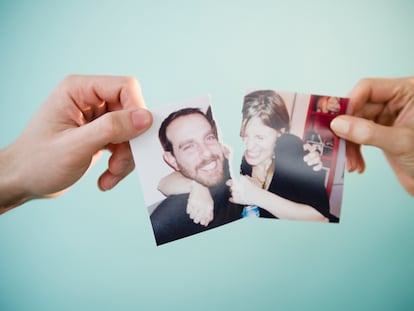Why do people hurt each other?
A research project at the Virginia Commonwealth University studies the biological, neurological and psychological mechanisms behind aggression. Its goal is to be able to control and reduce violence

“These days, aggression is a sadly relevant topic around the world. It’s an important issue right now. It speaks to a problem that I’ve been researching, and I wish it wasn’t so relevant,” says David Chester of Virginia Commonwealth University, who is the director of one of the few laboratories that study the biology of aggression. “To reduce violence, we must first more deeply understand why people are violent. Our lab’s goal is to reduce violence, that’s why we’re here. By uncovering the underlying psychological and neurological processes, we can gain traction in doing that,” he says.
“We are an evolutionarily advanced species, but ultimately we hurt each other,” Chester notes. “Aggression is at the forefront of our lives; however, characterizing it is not straightforward. In our lab, we define it as the impulse to hurt someone who doesn’t want to be hurt. You don’t necessarily have to cause harm; pure intent is enough. I wanted to hit you, and you didn’t want to be hurt. There are times when we do want to be hurt, like when I order spicy food in a restaurant, but in the case of aggression, the victim does not want to be hurt.”
Like altruism, or any other pattern of social behavior, aggression is complex and multifactorial. There is a genetic component to it, and brain mechanisms activate it. “But biology is not destiny,” Chester emphasizes. It’s impossible to claim that aggressive instincts are not at the core of our being; they are our tool for survival. To say that aggression is all negative would be an oversimplification. Some aggression is favorable, as in the case of self-defense, or child’s play, which has an element of controlled, non-destructive aggression. “Only if we know the child wants to knock the tower of bricks down is it a valuable thing for him if we see that he can build it up,” psychoanalyst Donald Winnicott notes.
Clearly, aggression is a common trait in the animal kingdom, where it often takes complex forms and serves a wide range of functions that enhance survival and reproduction. There is no inherent contradiction there: aggression can be morally sanctioned and, at the same time, be a product of biological adaptation. However, humans do not appear to be particularly well-suited to a life of violence, although we could hardly be called gentle. The matter is compounded by the fact that we are omnivorous creatures; we are physically weak and lack claws and beaks, which makes it difficult to kill another person without artificial weapons.
Aggression innately dwells in our brains, as Freud points out in Civilization and Its Discontents: “The element of truth behind all this, which people are so ready to disavow, is that men are not gentle creatures who want to be loved, and who at the most can defend themselves if they are attacked; they are, on the contrary, creatures among whose instinctual endowments is to be reckoned a powerful share of aggressiveness... Homo homini lupus [man is a wolf to man].” Chester and his associates have found that aggression operates in the same neural circuits as other addictive behaviors, such as using cocaine and engaging in risky sexual behavior. “Aggression is usually understood to be driven by negative emotions, such as anger or fear. Our lab has shown that’s true, negative emotions are there,” Chester says, “but positive emotions also play a central role in aggressive behavior; aggression can feel good, and that hedonic reward is a really powerful motivating force.”
How can we explain the positive feelings associated with aggression? Chester speculates that evolution favors neurobiological and psychological traits that help us to achieve certain goals, such as finding a mate, procuring resources, and achieving status. The brain is hardwired to reward and reinforce behaviors that have served us well throughout our evolutionary history. Chester thinks that it probably started with a predatory drive: “It’s the same fundamental drive that prompts the wolf to target the rabbit; in psychopaths, that drive has gone too far. They see everyone else as prey.”
“We can’t ignore our aggressive impulses, and it’s not a good idea to do so. We need to transform them into useful forces, to accept that they are here to stay,” Chester concludes. When we experience intense negative emotions accompanied by arousal and we are frustrated, angry, or our safe environment is threatened, we are more likely to act on aggression. However, if we become aware of what we are feeling, we might try to channel that energy toward activating other social behaviors that allow us to favorably transform aggression.”
David Dorenbaum is a psychiatrist and psychoanalyst.
Tu suscripción se está usando en otro dispositivo
¿Quieres añadir otro usuario a tu suscripción?
Si continúas leyendo en este dispositivo, no se podrá leer en el otro.
FlechaTu suscripción se está usando en otro dispositivo y solo puedes acceder a EL PAÍS desde un dispositivo a la vez.
Si quieres compartir tu cuenta, cambia tu suscripción a la modalidad Premium, así podrás añadir otro usuario. Cada uno accederá con su propia cuenta de email, lo que os permitirá personalizar vuestra experiencia en EL PAÍS.
¿Tienes una suscripción de empresa? Accede aquí para contratar más cuentas.
En el caso de no saber quién está usando tu cuenta, te recomendamos cambiar tu contraseña aquí.
Si decides continuar compartiendo tu cuenta, este mensaje se mostrará en tu dispositivo y en el de la otra persona que está usando tu cuenta de forma indefinida, afectando a tu experiencia de lectura. Puedes consultar aquí los términos y condiciones de la suscripción digital.










































